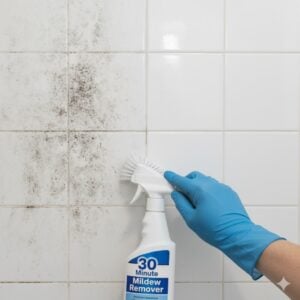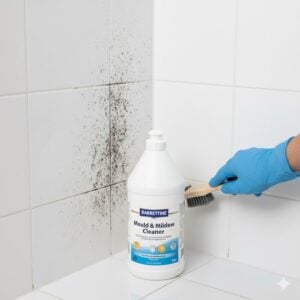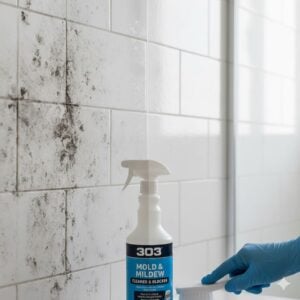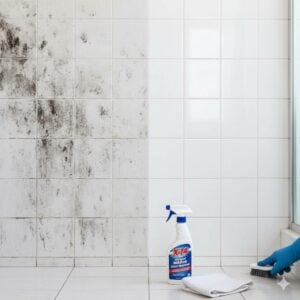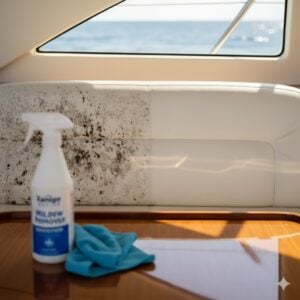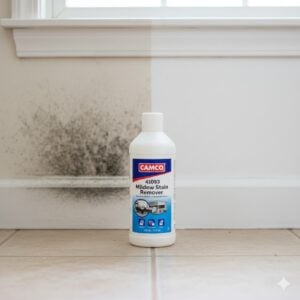Mold growing on walls is more than just an eyesore—it’s a sign that something’s going wrong in your home environment. Whether it’s behind the curtains, near the ceiling, or in the corners of your bathroom, mold doesn’t just appear overnight. It thrives in damp, poorly ventilated conditions that are unfortunately common in many UAE homes due to extreme weather, heavy AC usage, and sometimes overlooked leaks.
In this guide, we explain everything you need to know about wall mold: what causes it, how to spot it early, why it keeps coming back, and most importantly, what you can do to remove it and prevent it permanently. This isn’t just about cleaning—it’s about protecting your health and your home.
Table of Contents
Toggle1. What Causes Mold to Grow on Walls?
Mold needs three things to grow: moisture, organic material, and lack of airflow. Walls—especially those made of drywall or wood—offer the perfect surface for spores to settle if there’s a persistent moisture source nearby.
In the UAE, common causes of wall mold include:
- Condensation from air conditioning units or cold surfaces
- Leaking pipes behind walls or near plumbing installations
- Roof or window leaks during rare but intense rain
- Inadequate ventilation in bathrooms, kitchens, and storerooms
- Trapped humidity from poor building insulation
If your walls feel cold to the touch, or if you notice peeling paint or musty smells, mold may already be forming inside the wall materials—not just on the surface.
2. How to Identify Mold on Walls

Mold doesn’t always look like big black spots. In fact, it often starts subtly. Depending on the type of mold, the material of the wall, and the conditions in your home, you might see:
- Discoloration – yellow, green, brown, or black stains forming in irregular patterns
- Fluffy or powdery patches – especially near corners, baseboards, or ceilings
- Wall bubbling or peeling – paint or wallpaper may start to bubble or fall off
- Persistent odor – musty smell that doesn’t go away even after cleaning
Sometimes mold can grow inside the wall, especially in drywall or under wallpaper, making it hard to detect until it spreads outwards. If you suspect mold but don’t see it, professional air quality testing or wall scanning may be needed.
3. Is Wall Mold Dangerous?
Yes, mold growing on your walls can be a serious health risk—especially in a closed indoor environment with continuous exposure. Prolonged contact or inhalation of mold spores can lead to:
- Respiratory problems – coughing, wheezing, or asthma flare-ups
- Eye and skin irritation – redness, itchiness, or allergic rashes
- Fatigue and headaches – often from prolonged exposure to mycotoxins
- Complications for vulnerable groups – including children, the elderly, or anyone with weakened immune systems
Not all mold is toxic, but you can’t tell the difference just by looking. Black mold (Stachybotrys chartarum) is especially harmful and needs urgent attention. If you’re unsure, it’s better to treat any mold seriously and take quick action.
4. How to Remove Mold from Walls
Removing mold from your walls depends on how deep the infestation is. For surface-level mold, a combination of scrubbing, anti-mold cleaning agents, and drying techniques may be enough. But if the spores have penetrated the wall structure, painting over it or wiping it off won’t work—and may actually make things worse.
DIY steps for minor mold:
- Wear gloves and a mask for safety
- Use a mold-killing solution (vinegar, hydrogen peroxide, or mold cleaner)
- Scrub the area thoroughly with a brush
- Dry the area completely with fans or a dehumidifier
For moderate to severe mold:
- Remove wallpaper or damaged drywall sections
- Treat the wall cavities, not just the surface
- Use a mold-blocking primer and anti-fungal paint
- Check insulation or wood framing behind the wall if damage is visible
If the area is larger than 1 sq.m. or keeps returning, it’s best to call in professionals. At Bio-On, we offer full mold remediation services, including removal, structural repair, and prevention strategies tailored for UAE conditions.
5. How to Prevent Mold on Walls in the UAE
Prevention is always more affordable and less stressful than cleaning. Here’s what you can do to stop mold from growing on your walls again:
- Use a dehumidifier in rooms with limited ventilation
- Keep furniture away from walls to allow air flow
- Run exhaust fans in bathrooms and kitchens after use
- Seal window gaps to prevent rainwater leaks
- Install anti-mold paint or use mold-resistant materials in prone areas
- Monitor humidity levels – ideally keep indoor air under 60% humidity
Remember: mold spores are everywhere in the air. You can’t eliminate them entirely, but you can remove what they need to grow—moisture and stagnant air.
Conclusion
Mold growing on walls is a common issue in UAE homes, especially when AC usage, insulation, and humidity combine to create the perfect environment. But it’s not something you have to live with. With the right knowledge and help, you can clean it, prevent it, and keep your home safe and healthy.
We’ve helped many families in Dubai, Abu Dhabi, and beyond eliminate wall mold for good. If you notice suspicious spots, strange odors, or constant allergies, click the contact button on the right-middle of this post and let’s inspect it together—no commitment required.








